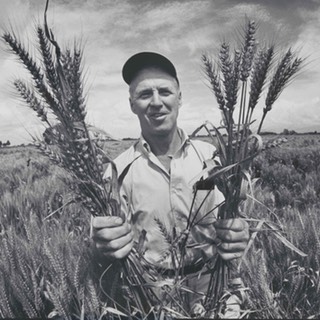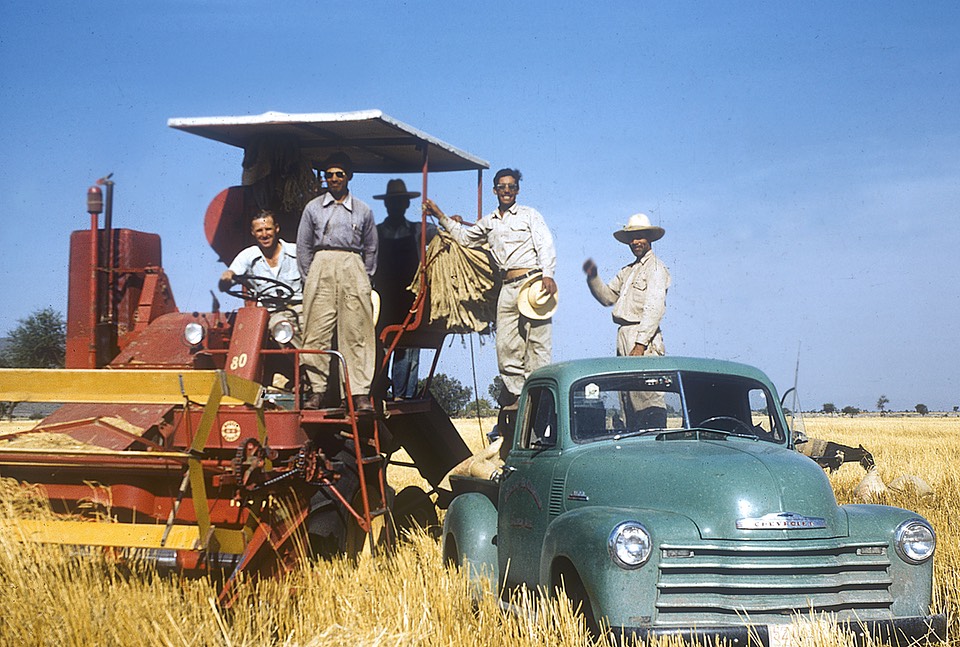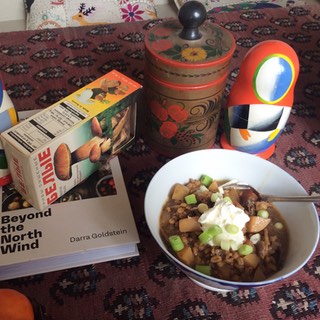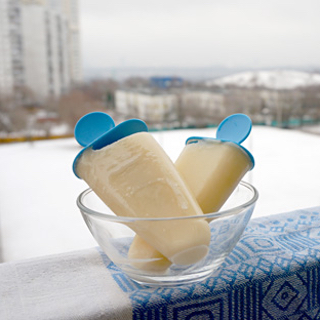
Podcast: Play in new window | Download (Duration: 29:38 — 27.3MB)
Subscribe: Google Podcasts | Spotify | Android | RSS | More
 Norman Borlaug won the Nobel Peace Prize in 1970 for his work as a wheat breeder. The disease-resistant, dwarf wheats that he developed were the foundation of the Green Revolution, banishing global famine and turning India into a food-exporting nation. Many people have hailed Borlaug as a saint, a saviour of humanity. Others have blamed him for everything that is wrong with the modern global food system. The truth, naturally, lies somewhere in between, which is brought out in a new documentary about Borlaug and his work.
Norman Borlaug won the Nobel Peace Prize in 1970 for his work as a wheat breeder. The disease-resistant, dwarf wheats that he developed were the foundation of the Green Revolution, banishing global famine and turning India into a food-exporting nation. Many people have hailed Borlaug as a saint, a saviour of humanity. Others have blamed him for everything that is wrong with the modern global food system. The truth, naturally, lies somewhere in between, which is brought out in a new documentary about Borlaug and his work.
The documentary airs on PBS in the United States next week. I got the chance to see a preview and to talk to Rob Rapley, the writer, director and producer.

As our conversation makes clear, I hope, Borlaug never really imagined he was improving the lot of small subsistence farmers. If he wanted to do that, he would not have been working on wheat. But he was very clear that all he had done was to buy us time. This is what he said in his Nobel Lecture in December 1970:
The green revolution has won a temporary success in man’s war against hunger and deprivation; it has given man a breathing space. If fully implemented, the revolution can provide sufficient food for sustenance during the next three decades. But the frightening power of human reproduction must also be curbed; otherwise the success of the green revolution will be ephemeral only.
He also said “I believe it is far better for mankind to be struggling with new problems caused by abundance rather than with the old problem of famine”.
My fear is that we have done neither. We have not used the time bought us by Borlaug and the Green Revolution wisely, nor have we any idea what to do with the abundance.
Notes
- Rob Rapley’s documentary The Man Who Tried to Feed the World airs on 21 April in the American Experience strand on PBS; Here’s the link for the episode.
- The book Rob Rapley mentions right at the start is Charles Mann’s The Wizard and the Prophet, about Norman Borlaug and William Vogt. Mann appears in the film too.
- I cannot pass up the opportunity to promote an episode I made back in 2016. The True Father of the First Green Revolution is about Nazareno Strampelli, an Italian plant breeder whose work foreshadowed Borlaug’s by 40 years.
- Small b&w photo of Borlaug with semi-dwarf wheats courtesy of National Portrait Gallery, Smithsonian Institution. Photo by Arthur Rickerby
- And, we have a transcript. Sorry for the delay.
- Cover (and main) photo shows Norman Borlaug behind the wheel of a combine harvester with the Mexican field technicians who contributed to seed production in the winter at Ciudad Obregón, Sonora, northern Mexico, c. 1952. Photo credit: CIMMYT.
- Banner photo shows Borlaug in the field at what is now CIMMYT’s CENEB station (Campo Experimental Norman E. Borlaug, or The Norman E. Borlaug Experiment Station), near Ciudad Obregón, Sonora, northern Mexico, in 1961. Note that the wheat is shoulder high, not a semi-dwarf variety (unless they are on their knees, which I doubt). Photo credit: CIMMYT


 Darra Goldstein combines a scholar’s knowledge of history and literature with a cook’s interest in recipes and ingredients. She had already written extensively on food across the vast Soviet empire, but more recently turned her attention to a search for what she calls “the true heart of Russian food“. She found it on the Kola Peninsula, a wild and forbidding part of Russia right at the top of Scandinavia. Our conversation, prompted by her new book, went further afield to include glimpses of food revivals and innovation in Russia today.
Darra Goldstein combines a scholar’s knowledge of history and literature with a cook’s interest in recipes and ingredients. She had already written extensively on food across the vast Soviet empire, but more recently turned her attention to a search for what she calls “the true heart of Russian food“. She found it on the Kola Peninsula, a wild and forbidding part of Russia right at the top of Scandinavia. Our conversation, prompted by her new book, went further afield to include glimpses of food revivals and innovation in Russia today.
